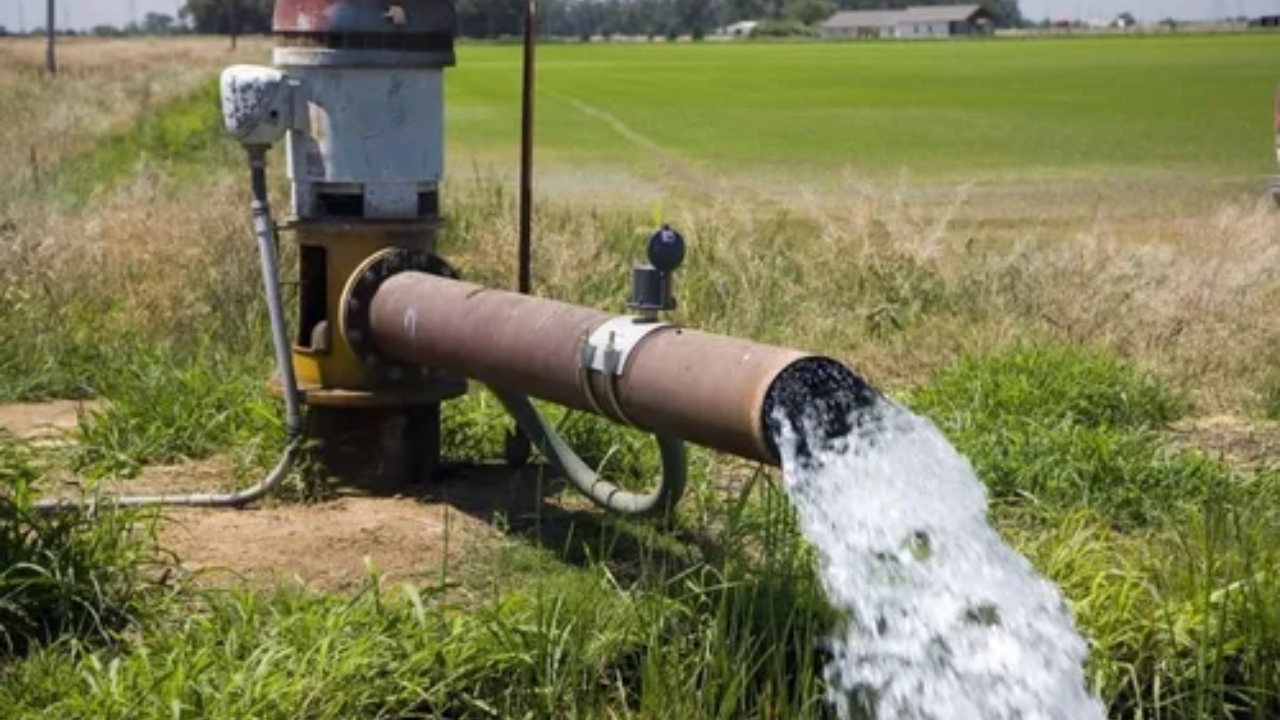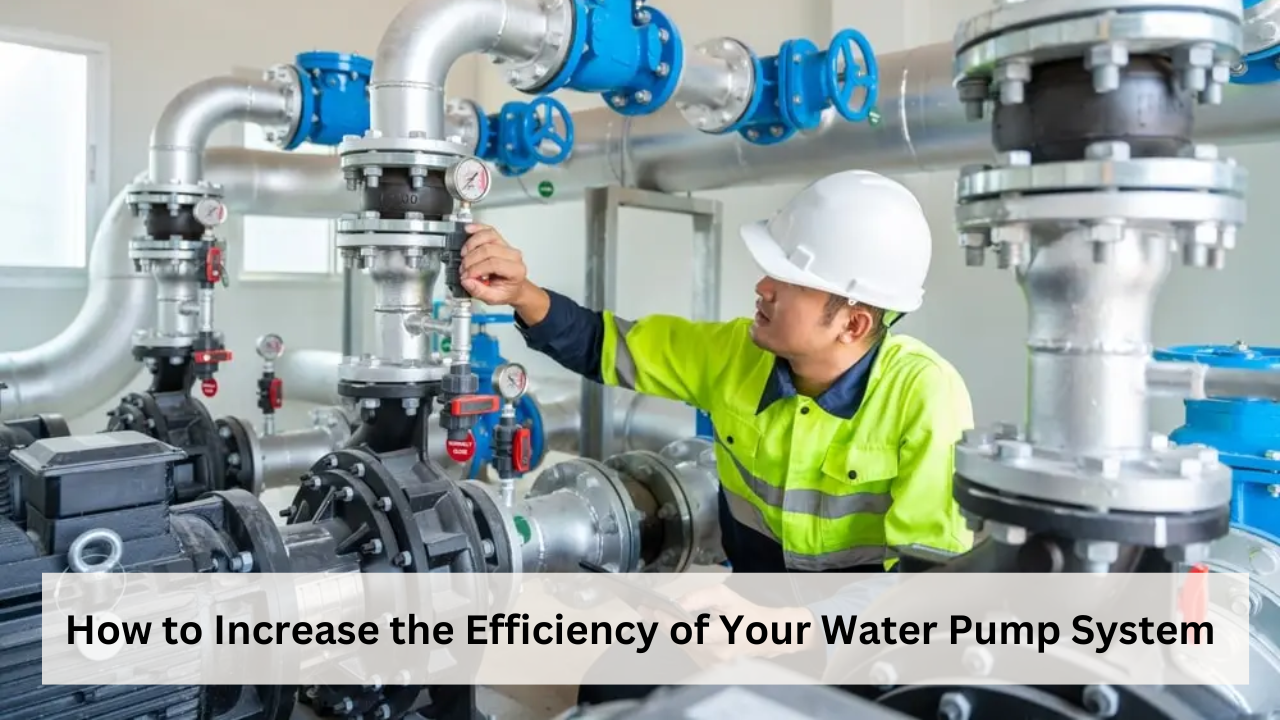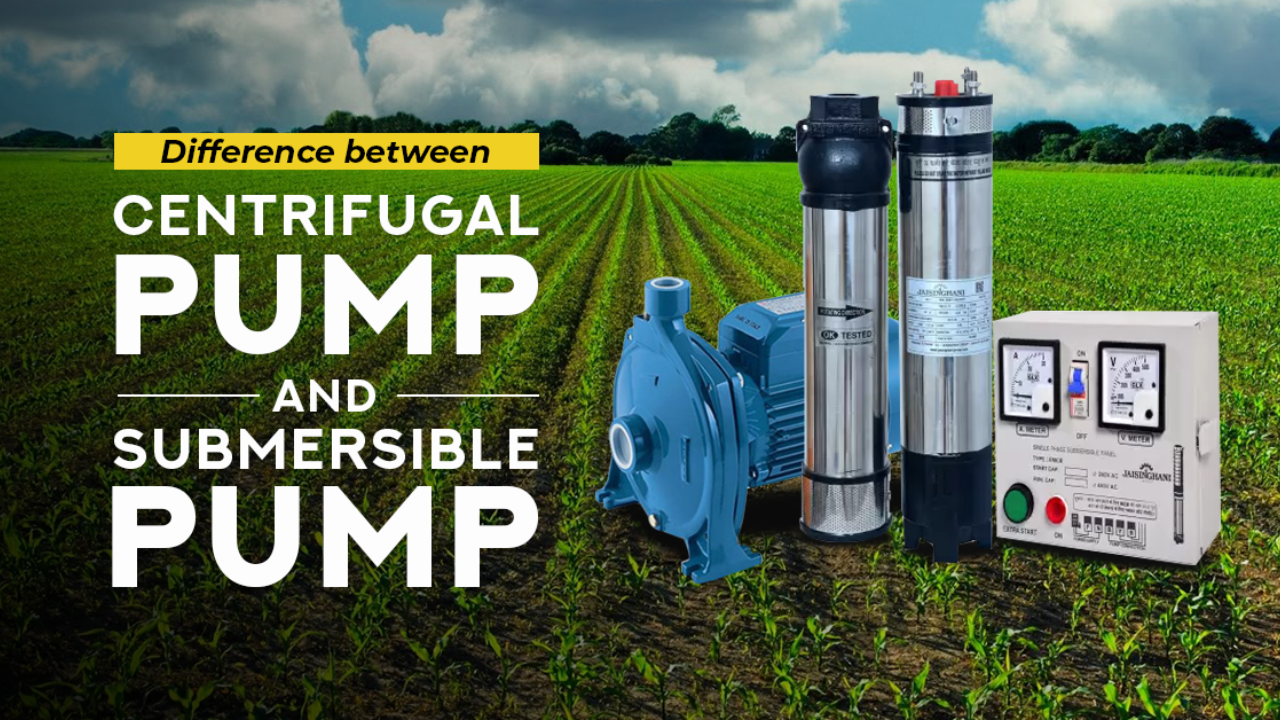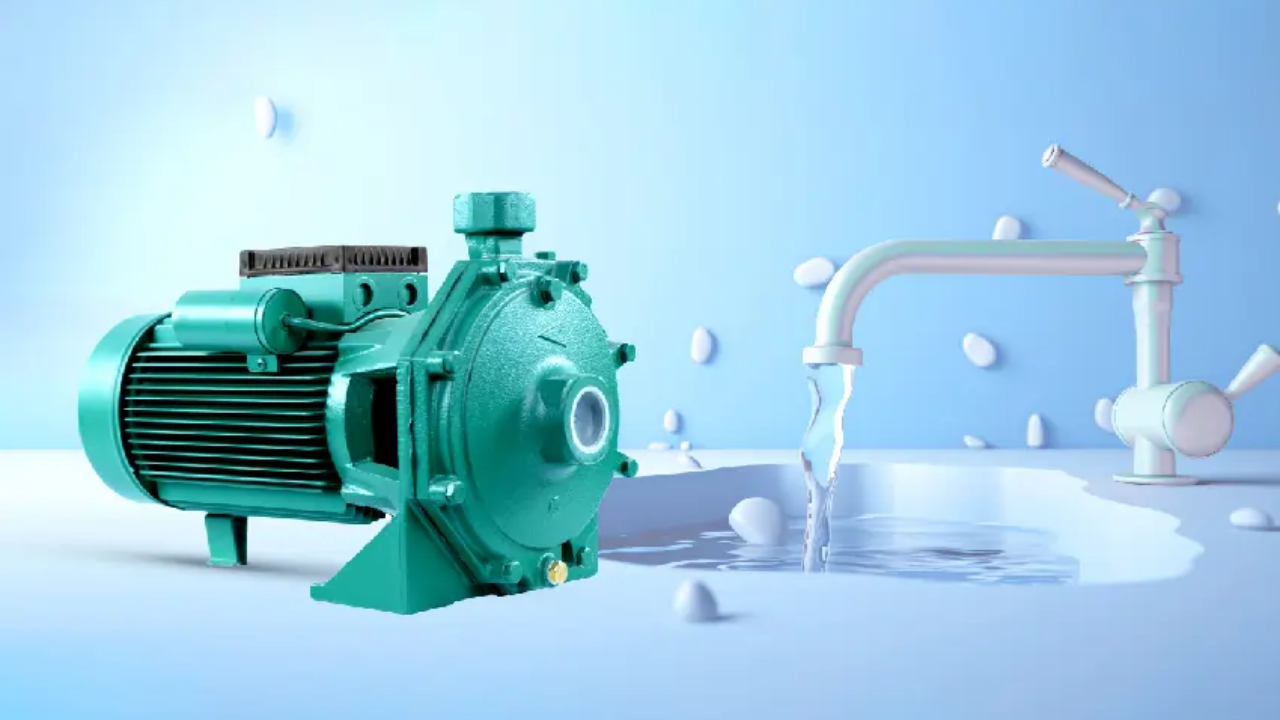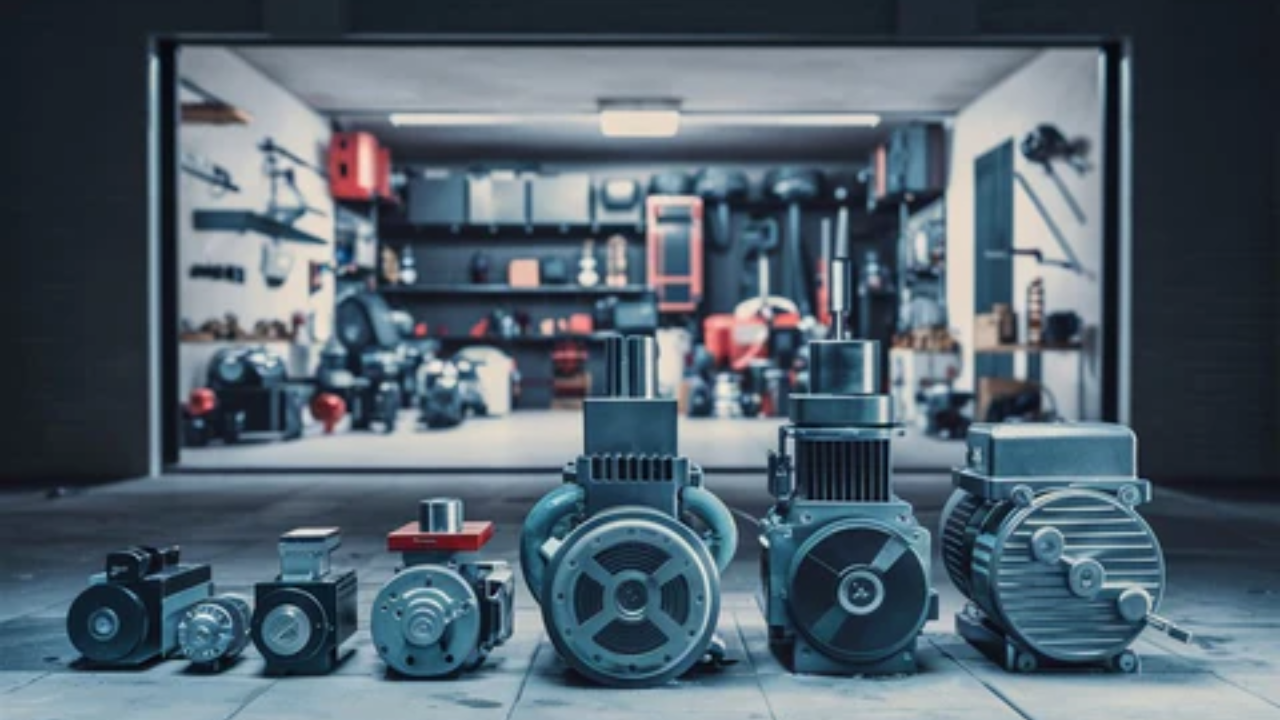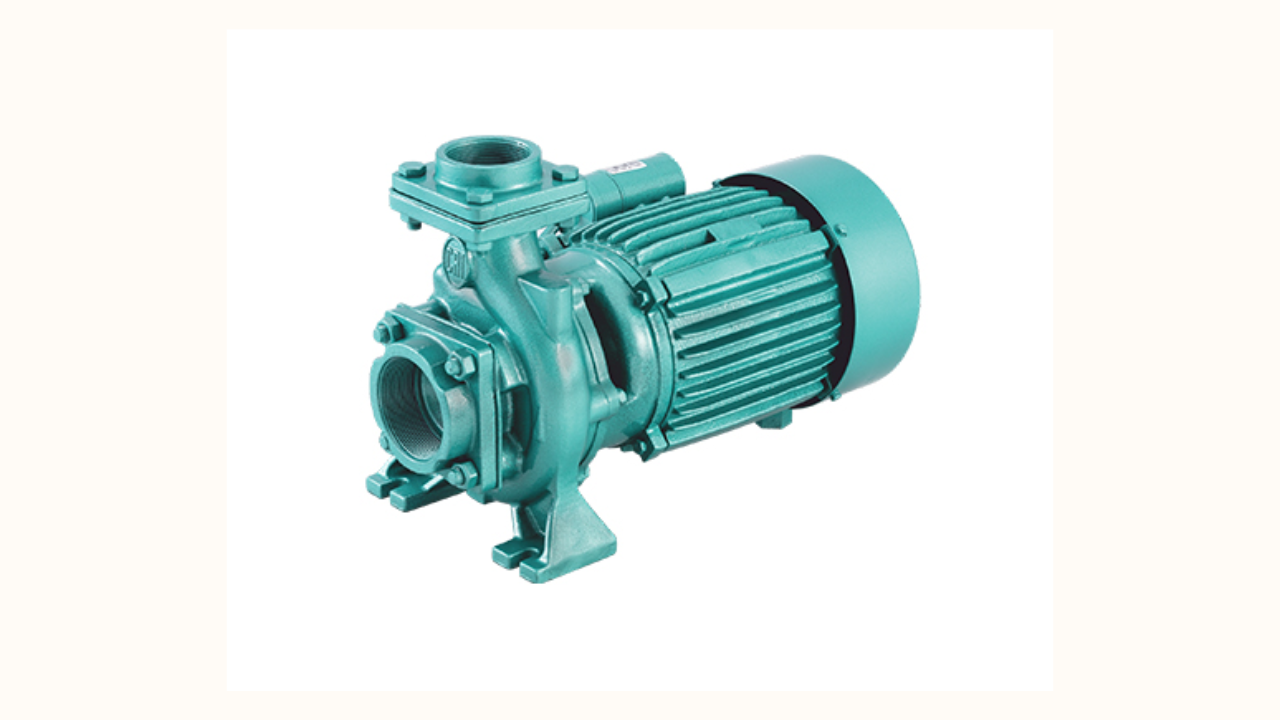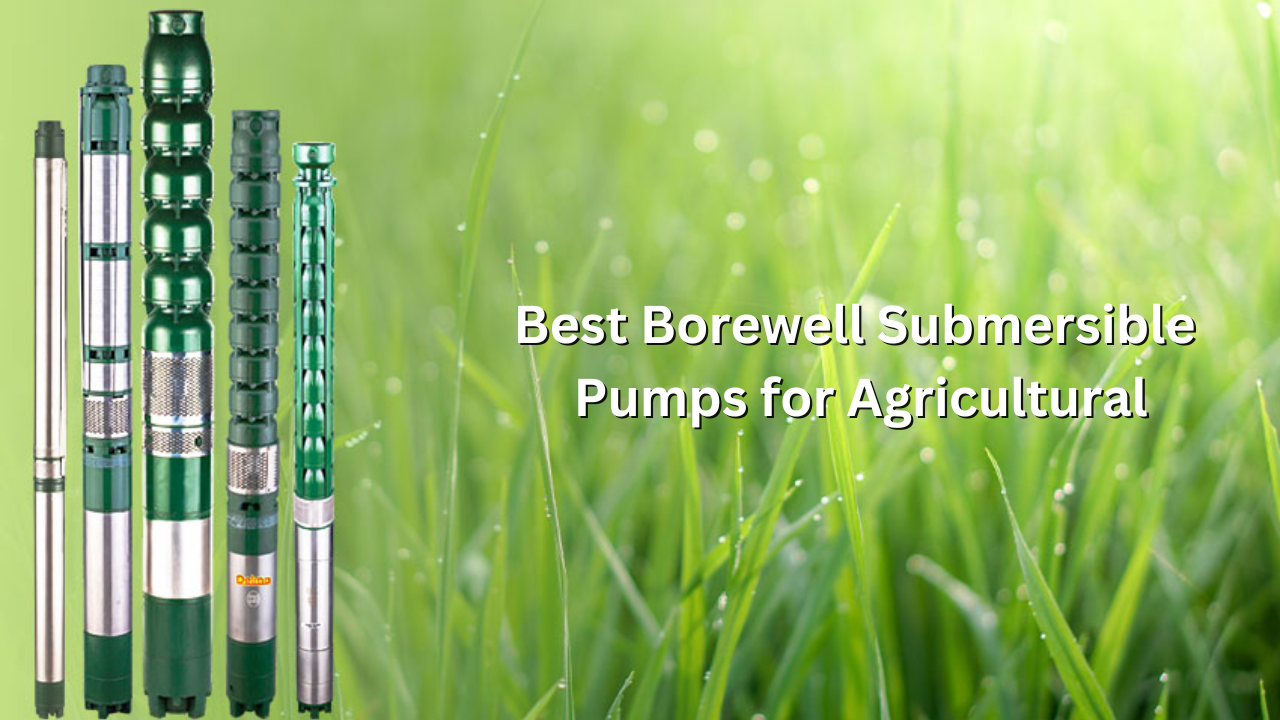Comprehensive Guide to Choosing the Right Water Pump for Irrigation
2025-01-16
Irrigation is a critical process for agriculture and gardening, and choosing the right water pump can significantly impact efficiency, cost, and productivity. With numerous options available, understanding the essential factors before purchasing a water pump is crucial. This guide will walk you through all the considerations to ensure you make the best choice.
Why is Choosing the Right Water Pump Important?
Water pumps are the backbone of any irrigation system. A suitable pump ensures efficient water delivery, minimizes energy consumption, and helps maintain healthy crops or plants.
An inappropriate pump can lead to insufficient water supply, higher operational costs, and even system failures.
Factors to Consider When Buying a Water Pump for Irrigation
1. Type of Water Pump
The first step in selecting a water pump is determining the type that suits your needs. The primary options include:
a) Centrifugal Pumps
These are widely used for irrigation and work well with clean water sources. They are efficient for moderate flow rates and head heights.
b) Submersible Pumps
Ideal for drawing water from wells or boreholes, submersible pumps are placed underwater, ensuring minimal noise and better energy efficiency.
c) Booster Pumps
Used to increase water pressure in an existing system, booster pumps are excellent for large irrigation setups requiring high-pressure delivery.
2. Water Source
Understanding the water source is crucial as it influences the type and capacity of the pump. Consider the following:
- Surface Water: Pumps for ponds, lakes, or rivers should have high suction power.
- Groundwater: For wells or boreholes, submersible pumps are more appropriate.
- Rainwater Harvesting Tanks: Smaller pumps or booster pumps are sufficient for these systems.
3. Flow Rate and Head Height
a) Flow Rate
The flow rate, measured in liters per minute (LPM) or gallons per minute (GPM), determines how much water the pump can deliver. Calculate the flow rate based on the irrigation area and water requirements of your crops or plants.
b) Head Height
The head height represents the vertical distance the pump needs to move water. Choose a pump with adequate head height to ensure efficient water delivery.
4. Energy Efficiency
Energy costs can significantly impact your irrigation expenses. Look for pumps with high energy efficiency ratings to minimize long-term operational costs. Solar-powered pumps are an excellent option for sustainable and cost-effective irrigation.
5. Pump Material and Durability
Water pumps are often exposed to harsh conditions, including dirt, debris, and varying water quality. Ensure the pump is made from durable materials like stainless steel or cast iron to withstand wear and tear.
6. Cost and Budget
While initial cost is a factor, consider the total cost of ownership, including maintenance, energy consumption, and potential repairs. Investing in a high-quality pump may save you money in the long run.
7. Ease of Maintenance
Regular maintenance is essential for optimal performance. Choose a pump that is easy to clean and repair, with readily available spare parts.
8. Automation and Controls
Modern water pumps come with advanced features such as automatic pressure controls, timers, and remote monitoring. These features can make irrigation more convenient and efficient.
Additional Tips for Buying a Water Pump
- Check the warranty and after-sales service provided by the manufacturer.
- Consider noise levels, especially for pumps used in residential areas.
- Consult with irrigation experts or suppliers to ensure compatibility with your system.
FAQs
Q1: How do I determine the right size of a water pump for my irrigation system?
A: Calculate the total water requirement based on your irrigation area and crop type. Match this with the pump’s flow rate and head height to ensure it meets your needs.
Q2: Can I use a solar-powered pump for irrigation?
A: Yes, solar-powered pumps are an excellent choice for sustainable irrigation. They are energy-efficient and suitable for areas with abundant sunlight.
Q3: How often should I maintain my water pump?
A: Maintenance frequency depends on usage and water quality. Regularly inspect for clogs, leaks, and wear and tear. Follow the manufacturer’s maintenance guidelines.
Q4: What is the difference between a centrifugal pump and a submersible pump?
A: Centrifugal pumps are placed above the water source and are suitable for moderate flow rates. Submersible pumps are installed underwater and are ideal for deep wells or boreholes.
Q5: Are there specific pumps for drip irrigation systems?
A: Yes, positive displacement pumps are suitable for drip irrigation as they deliver a constant flow of water, even at varying pressures.
Conclusion
Choosing the right water pump for irrigation involves assessing your water source, flow rate, head height, and budget. Prioritize energy efficiency, durability, and ease of maintenance to ensure long-term reliability.
By considering these factors and consulting with experts, you can select a pump that optimizes your irrigation system and boosts productivity.
How to Increase the Efficiency of Your Water Pump System
2025-01-15
Efficient water pump systems save energy, reduce operational costs, and ensure long-lasting performance. Whether you use water pumps for residential, agricultural, or industrial purposes, proper optimization can make a significant difference in efficiency. In this guide, we’ll explore expert tips, tricks, and strategies to maximize the performance of your water pump system.
Why Pump Efficiency Matters
An efficient water pump system doesn’t just reduce energy bills; it also minimizes wear and tear on components, ensuring a longer lifespan and fewer breakdowns. By focusing on efficiency, you can save money, reduce downtime, and improve overall water management.
Key Factors That Impact Water Pump Efficiency
Before diving into solutions, let’s understand the factors that affect pump efficiency:
- Pump Design and Size: A pump that’s too large or too small for your application can waste energy and reduce efficiency.
- Flow Rate and Head Height: Inadequate alignment between the pump’s capacity and system requirements can lead to performance issues.
- Pump Maintenance: Neglected pumps often operate below their optimal efficiency due to clogs, leaks, or worn parts.
- Energy Usage: Inefficient motors or improper settings can lead to high electricity consumption.
- Water Quality: Sediments, debris, or hard water can clog the pump or damage its components, reducing efficiency.
Expert Tips to Increase the Efficiency of Your Water Pump System
1. Select the Right Pump for Your Needs
The foundation of an efficient pump system begins with choosing the correct pump type and size. Pumps that are too powerful waste energy, while undersized pumps struggle to meet demands, leading to premature wear.
Pro Tip: Work with a professional to calculate the pump's flow rate, head height, and capacity requirements before purchase. A centrifugal pump works well for general use, while submersible pumps are ideal for deep well applications.
2. Regularly Inspect and Maintain the Pump
Proper maintenance is crucial for optimal efficiency. Over time, pumps accumulate debris, experience component wear, and develop leaks, all of which can decrease efficiency.
- Inspect for Leaks: Check all seals and gaskets regularly to ensure there are no leaks that might cause pressure loss.
- Clean Components: Remove debris from filters, impellers, and pipelines to prevent clogs.
- Lubricate Moving Parts: Proper lubrication minimizes friction and reduces energy consumption.
Expanded Tip: Schedule professional maintenance at least twice a year for industrial pumps or in cases of heavy usage.
3. Optimize Motor Efficiency
The motor is the heart of your water pump system. An inefficient motor can lead to excessive energy consumption and subpar performance.
- Choose Energy-Efficient Motors: Modern energy-efficient motors can reduce electricity consumption by up to 30%.
- Install Variable Frequency Drives (VFDs): A VFD allows you to adjust the pump’s speed based on real-time demand, preventing over-pumping and saving energy.
Extra Insight: Check for proper motor alignment and ensure it runs within its recommended load capacity to avoid overheating.
4. Use High-Quality Pipes and Fittings
The piping system connected to your pump plays a significant role in overall efficiency. Poor-quality pipes, fittings, or improper installations can create unnecessary friction and pressure drops.
- Minimize Pipe Length and Bends: Shorter, straighter pipes reduce friction losses.
- Seal Connections Properly: Ensure airtight connections to prevent leaks or pressure loss.
- Use the Right Pipe Diameter: Undersized pipes cause high pressure losses, while oversized pipes can lead to inefficient pumping.
5. Monitor Water Quality Regularly
Contaminated water can reduce pump efficiency by causing blockages or damaging components.
- Install Pre-Filters: Pre-filters remove sediments, preventing clogs in the pump.
- Use Anti-Corrosion Measures: If the water contains high levels of salt or chemicals, use corrosion-resistant materials like stainless steel for your pump and pipes.
- Flush the System Periodically: Regular flushing removes debris, sediments, and contaminants that may accumulate over time.
6. Upgrade to Smart Pumping Systems
Modern smart pumps come with built-in sensors and automation, allowing you to monitor performance and make adjustments in real-time.
- Automated Flow Control: Smart systems adjust the pump speed based on demand, saving energy.
- Real-Time Alerts: Built-in diagnostics notify you of performance issues before they become critical.
- Remote Monitoring: With IoT-enabled smart pumps, you can monitor and control your pump system from anywhere.
Pro Tip: Upgrading to smart systems might involve a higher initial investment but offers long-term savings through enhanced efficiency and reduced maintenance.
FAQs About Increasing Pump Efficiency
Q1. How do I know if my water pump system is inefficient?
A: Signs of inefficiency include reduced water flow, inconsistent pressure, overheating motors, high electricity bills, and frequent breakdowns. If you notice any of these, inspect your pump or consult a professional.
Q2. Can regular maintenance significantly improve pump efficiency?
A: Yes, regular maintenance prevents clogs, leaks, and wear and tear, ensuring the pump operates at its designed efficiency. Ignoring maintenance can lead to reduced performance and higher energy costs.
Q3. How often should I service my pump system?
A: For residential pumps, service them at least once a year. For commercial or industrial pumps, servicing should be done every 3-6 months or more frequently in high-demand applications.
What is the Difference Between Centrifugal and Submersible Water Pumps?
2025-01-15
Water pumps are essential for various residential, commercial, and industrial applications. Two of the most commonly used types of water pumps are centrifugal pumps and submersible pumps. Although both serve the purpose of moving water, their designs, functionalities, and applications vary significantly.
In this article, we will explore the differences between centrifugal and submersible water pumps, provide expert tips on their usage, and answer some of the most frequently asked questions.
Understanding Centrifugal and Submersible Pumps
What Is a Centrifugal Pump?
Centrifugal pumps are surface-mounted water pumps that use a rotating impeller to generate pressure and move water. These pumps rely on atmospheric pressure and centrifugal force to draw water through an inlet and discharge it through an outlet.
- Key Design Feature: The pump is not submerged in water but installed above the water source, connected by a pipe or suction hose.
- Common Applications: Centrifugal pumps are widely used for irrigation, HVAC systems, firefighting, and water circulation in industrial processes.
What Is a Submersible Pump?
Submersible pumps, as the name suggests, are designed to be fully submerged in the water or liquid they are pumping. These pumps are hermetically sealed, with the motor encased to prevent water damage.
- Key Design Feature: The pump and motor are enclosed in a watertight housing, allowing the unit to operate underwater.
- Common Applications: Submersible pumps are typically used for wells, sewage systems, drainage, and dewatering flooded areas.
Key Differences Between Centrifugal and Submersible Pumps
1. Location of Installation
- Centrifugal Pumps: Installed above the water source, requiring a suction mechanism to draw water.
- Submersible Pumps: Installed directly inside the water source, eliminating the need for suction.
Pro Tip: For applications involving deep wells or underground water, submersible pumps are more efficient as they push water upward rather than relying on suction.
2. Power Efficiency
- Centrifugal Pumps: Less energy-efficient when pumping water from significant depths due to the effort required to overcome suction loss.
- Submersible Pumps: Highly energy-efficient as they operate directly within the water, reducing energy loss.
Insight: Submersible pumps consume less energy for deep-water applications because they don’t face the limitations of atmospheric pressure.
3. Ease of Maintenance
- Centrifugal Pumps: Easier to maintain since they are above ground, making all components accessible for inspection or repair.
- Submersible Pumps: More challenging to maintain as they need to be removed from the water for servicing or repairs.
Pro Tip: For frequent maintenance needs, centrifugal pumps are a more practical choice.
4. Applications and Versatility
- Centrifugal Pumps: Ideal for a wide range of surface-level applications, such as water transfer, irrigation, and industrial processes.
- Submersible Pumps: Best suited for deep-water applications, including well pumping, sewage handling, and flood drainage.
Expanded Tip: Choose centrifugal pumps for high-flow, low-pressure applications, and submersible pumps for high-pressure, deep-water needs.
5. Durability in Harsh Conditions
- Centrifugal Pumps: Exposed to environmental elements, making them less durable in harsh conditions without proper protection.
- Submersible Pumps: Designed to withstand underwater conditions, offering better durability against moisture and corrosion.
Extra Tip: For pumping abrasive or corrosive fluids, opt for submersible pumps made from corrosion-resistant materials like stainless steel.
Factors to Consider When Choosing Between Centrifugal and Submersible Pumps
- Depth of the Water Source: For shallow water sources, centrifugal pumps are ideal. For deeper sources, submersible pumps are more efficient.
- Water Quality: If the water contains solids or debris, a submersible sewage pump may be the best choice.
- Energy Efficiency: For energy savings in deep wells, submersible pumps outperform centrifugal pumps.
- Maintenance Accessibility: Consider centrifugal pumps for ease of servicing in applications requiring frequent maintenance.
FAQs About Centrifugal and Submersible Pumps
Q1. Can centrifugal pumps be used for deep wells?
A: Centrifugal pumps are not suitable for deep wells as they rely on suction, which is limited by atmospheric pressure. For deep wells, a submersible pump is more effective as it pushes water upward rather than pulling it.
Q2. Which pump type is more energy-efficient?
A: Submersible pumps are generally more energy-efficient than centrifugal pumps, especially for deep-water applications. Their ability to push water directly reduces energy loss compared to the suction mechanism of centrifugal pumps.
Q3. Are submersible pumps harder to maintain?
A: Yes, submersible pumps are harder to maintain because they must be removed from the water for servicing. Centrifugal pumps, being surface-mounted, are easier to inspect and repair.
Q4. Can submersible pumps handle solids in water?
A: Submersible pumps, especially sewage pumps, are designed to handle water with solids and debris. They come equipped with impellers or grinder mechanisms to process waste.
Q5. What is the lifespan of centrifugal and submersible pumps?
A: The lifespan depends on usage and maintenance. On average, both pump types can last 8-15 years, with proper care and regular servicing. Submersible pumps may require additional protection against corrosion in certain water conditions.
Top Applications of Water Pumps in Residential and Commercial Spaces
2025-01-14
Water pumps have become a necessity in both residential and commercial spaces, ensuring the smooth movement of water for a wide variety of purposes. From supplying water to homes to managing industrial wastewater, water pumps provide unmatched efficiency and convenience. In this article, we explore the top applications of water pumps and provide actionable insights to help you make an informed decision.
Why Water Pumps Are Essential
Water pumps play a vital role in managing water resources effectively. They not only ensure a continuous water supply but also help in addressing critical needs like irrigation, wastewater management, and firefighting. Choosing the right water pump for your specific requirement can optimize performance and reduce energy consumption.
Applications of Water Pumps in Residential Spaces
Water pumps in residential areas are designed to cater to daily household needs. Here are the primary ways they are used:
1. Reliable Water Supply for Homes
Residential water pumps are essential for ensuring a steady flow of water, especially in areas where water pressure is low or irregular. They are commonly used to pump water from underground sources or municipal supplies to overhead tanks.
Pro Tip: Choose a self-priming pump or booster pump for easy installation and consistent water flow in multi-story buildings.
2. Efficient Garden and Lawn Irrigation
A well-maintained garden or lawn requires an adequate and regular water supply. Water pumps power sprinkler systems and hose irrigation setups, helping homeowners maintain lush greenery.
Pro Tip: Submersible pumps work best for deep wells, while centrifugal pumps are ideal for small to medium-sized gardens. Using a timer with your irrigation system can help conserve water and energy.
3. Filling Overhead Water Tanks Automatically
Overhead tanks are a standard feature in residential areas to ensure water availability. Water pumps are often used to automatically fill these tanks without manual intervention.
Added Insight: Modern water pumps come with automatic sensors that stop pumping once the tank is full, preventing water wastage.
4. Dewatering Basements and Flood-Prone Areas
In areas prone to flooding, waterlogging in basements can cause significant damage. Dewatering pumps help homeowners efficiently remove excess water and prevent structural damage.
Extra Tip: For flood-prone zones, invest in a heavy-duty pump with a backup power supply to ensure functionality during power outages.
Applications of Water Pumps in Commercial Spaces
Commercial spaces have more complex water management needs, ranging from large-scale water supply to waste management. Below are the key applications:
1. Supporting Industrial Water Circulation
Industries require water for various processes, including cooling machinery, washing, and production. Industrial water pumps are designed to handle high volumes of water circulation efficiently.
Additional Insight: Look for corrosion-resistant materials, such as stainless steel or bronze, for pumps used in industries dealing with saline or hard water.
2. Wastewater Management and Drainage
Sump pumps and sewage pumps are critical for managing wastewater and preventing waterlogging in commercial spaces like factories, hotels, and shopping malls.
Tip: Use high-capacity sewage pumps equipped with grinder blades for handling solid waste effectively in wastewater systems.
3. Ensuring Fire Safety with High-Performance Pumps
Firefighting systems in commercial spaces rely on high-capacity water pumps to ensure a consistent water flow during emergencies. These pumps are an essential part of fire safety regulations.
Pro Tip: Regularly test and maintain fire fighting pumps to ensure they function effectively during critical situations.
Factors to Consider When Choosing a Water Pump
When selecting a water pump, consider these critical factors to ensure optimal performance:
- Capacity and Flow Rate: Evaluate the volume of water required and the speed at which it needs to be pumped. For example, a high-flow pump is ideal for commercial applications, while a low-flow pump suits residential needs.
- Type of Pump: Submersible pumps are suitable for underwater use, while centrifugal pumps are versatile for various applications.
- Energy Efficiency: Always prioritize pumps with energy-efficient motors to reduce electricity costs in the long run.
- Material and Durability: Pumps made from corrosion-resistant materials are better suited for saline or hard water conditions.
Maintenance Tips for Long-Lasting Performance
- Regular Inspections: Check the pump’s seals, gaskets, and motor for wear and tear.
- Lubricate Moving Parts: Ensure the motor and moving components are well-lubricated to reduce friction and improve efficiency.
- Clean the Pump Regularly: Remove debris and sediments that may clog the pump or reduce its efficiency.
- Replace Worn-Out Parts: Timely replacement of worn components prevents costly repairs.
- Follow Manufacturer’s Guidelines: Always adhere to the maintenance schedule provided by the manufacturer for best results.
FAQs about Water Pumps
Q1. How do I choose the right water pump for my home?
A: To choose the right water pump for your home, assess your water pressure needs, the distance to be covered, and the source of water (underground or municipal). A booster pump is ideal for increasing water pressure, while a self-priming pump works well for most domestic applications.
Q2. Can one pump handle both irrigation and domestic water supply?
A: Yes, a single water pump with adequate capacity can handle both irrigation and domestic needs. However, ensure it has the necessary power and flow rate to support multiple uses simultaneously.
Q3. How often should I service my water pump?
A: It’s recommended to service your water pump at least once every 6 months for residential use and quarterly for commercial applications to ensure optimal performance and longevity.
Q4. What are the common signs of a failing water pump?
A: Common signs include reduced water flow, unusual noises, leaks, overheating, or inconsistent water pressure. Address these issues promptly to prevent further damage.
Q5. Are submersible pumps better than centrifugal pumps?
A: Submersible pumps are better for underwater applications, such as wells or sump pits, as they operate quietly and efficiently. Centrifugal pumps are versatile and suitable for applications where the pump doesn’t need to be submerged.
Also Read
- The Best Borewell Submersible Pumps for Agricultural Use in 2025
- How to Install a Centrifugal Monoblock Pump: A Step-by-Step Guide.
- What Professionals Should Know About Choosing Electric Motors for Their Projects.
What Professionals Should Know About Choosing Electric Motors for Their Projects
2024-12-08
Choosing the right electric motor is vital because it directly affects the efficiency, performance, and reliability of a project. A well-selected motor ensures optimal power delivery, reduces energy consumption, and minimizes maintenance costs.
Incorrect motor selection can lead to inefficiencies, overheating, and premature failure, potentially causing costly downtime. By carefully matching motor specifications to the application’s load, speed, and environmental demands, professionals can enhance project longevity, safety, and overall success.
Factors to Consider When Choosing an Electric Motor for Your Facility
When selecting an electric motor, understanding key specifications is essential to ensure optimal performance and compatibility with your project. Here are the primary specifications to consider:
1. Power Rating (Horsepower or Kilowatts)
The power rating defines the motor’s capacity to perform work. Choosing the correct power rating is crucial to meet your project’s demands without overloading or underpowering the motor. Under-sizing can lead to inefficiency and overheating, while over-sizing increases costs unnecessarily. Calculating the required power based on load and application is essential for optimal performance.
2.Torque and Speed (RPM)
Torque measures the motor's rotational force, while speed, typically measured in revolutions per minute (RPM), indicates how fast the motor runs. Different applications require varying torque and speed combinations. For instance, high-torque, low-speed motors are ideal for heavy lifting, while high-speed motors suit applications like fans or pumps. Understanding the torque-speed relationship helps ensure the motor matches your project's mechanical requirements.
3. Service Factor
- The service factor is a multiplier that shows how much overload a motor can handle beyond its rated capacity. For instance, a service factor of 1.2 means the motor can safely operate at 120% of its rated load. A higher service factor is desirable in applications prone to load fluctuations, ensuring motor durability and preventing overheating or failure.
4. Efficiency Rating
Motor efficiency reflects how effectively electrical energy is converted into mechanical energy. Motors with high efficiency ratings, such as those with IE2 & IE3 ratings, can reduce energy consumption, lower operating costs, and decrease heat generation, especially in continuous-use applications. Opting for energy-efficient motors also contributes to sustainability goals.
5. Duty Cycle
The duty cycle indicates how long a motor can operate before it needs to cool down. Motors used for intermittent or stop-start operations need a duty cycle rating that matches their intended usage. Continuous-duty motors are designed for constant operation, while intermittent-duty motors are meant for short, periodic use.
6. Voltage and Current
Matching the motor’s voltage and current requirements to your power supply is critical to avoid electrical issues. Motors are designed to operate within specific voltage ranges, and exceeding these can cause damage. Proper alignment ensures efficient operation and prevents overheating or electrical failures.
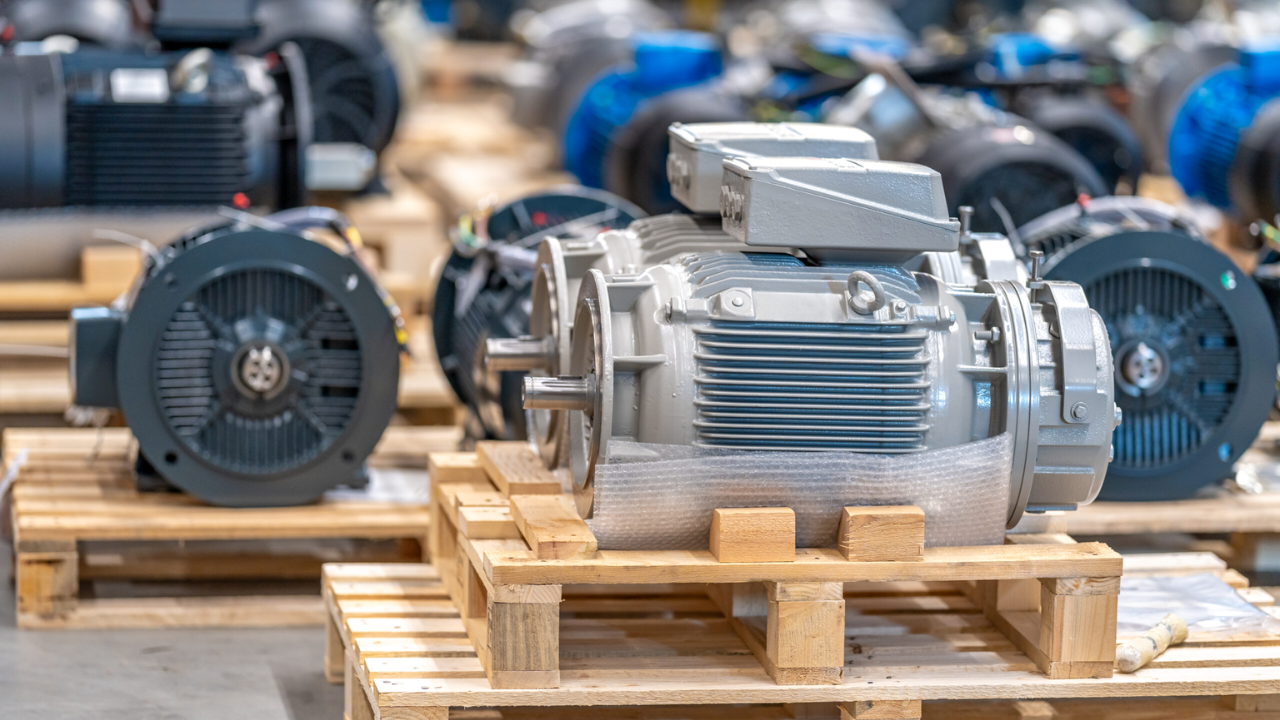
What Should You Consider for When Purchasing Electric Motors?
When purchasing electric motors, several key factors should be considered to ensure the motor meets the specific needs of your project. First, determine the motor type (AC or DC) based on the application's requirements for speed, torque, and control.
Next, assess the power rating (horsepower or kilowatts) to ensure the motor can handle the load and avoid under- or over-sizing. Consider the torque and speed specifications, as different applications require different torque-speed combinations.
You should also take into account the efficiency rating to optimize energy consumption and reduce long-term operating costs. Additionally, examine the environmental conditions such as temperature, humidity, and exposure to dust or chemicals, as these will influence the motor’s durability and required protection (IP rating or hazardous area certifications).
Finally, factor in maintenance needs and service life by ensuring the motor is easy to maintain, has adequate warranties, and comes from a reliable manufacturer that offers strong technical support.
These considerations will help ensure that you choose a motor that not only meets performance demands but also provides long-term reliability and cost-effectiveness.
Conclusion
Choosing the right electric motor for a project is a critical decision that impacts performance, efficiency, and overall success. Professionals must carefully consider factors such as motor type, power rating, torque, speed, and environmental conditions to ensure the motor meets the specific demands of the application.
By understanding key motor specifications and aligning them with project needs, you can enhance operational efficiency, reduce energy consumption, and extend the lifespan of the motor.
Ultimately, a well-informed motor selection not only improves the reliability of your project but also minimizes long-term costs and downtime, contributing to a more efficient and sustainable operation.
How to Install a Centrifugal Monoblock Pump: A Step-by-Step Guide
2024-12-05
Centrifugal monoblock pumps are single-unit pumps where the pump and motor are mounted on a common shaft, eliminating the need for coupling between them. These pumps are widely used in agricultural, industrial, and residential applications due to their simple design, efficiency, and ease of maintenance.
Centrifugal pumps work by converting rotational kinetic energy from the motor into hydrodynamic energy, allowing them to move liquids, typically water, at high flow rates.
Their compact size, ease of installation, and cost-effectiveness make them a popular choice for applications requiring continuous water circulation or transfer.
Importance of proper installation for efficiency and longevity of Centrifugal Monoblock Pump
Proper installation of a centrifugal monoblock pump is crucial for ensuring its efficiency and longevity. Here's why:
- Optimal Performance: Correct installation helps the pump operate at peak efficiency, ensuring it delivers the expected flow rate and pressure. Poor alignment or incorrect connections can cause performance losses, reducing the pump's ability to move water effectively.
- Prevention of Damage: Improper installation, such as air leaks in suction lines or incorrect priming, can cause the pump to run dry, leading to overheating, excessive wear, or impeller damage. This can shorten the lifespan of the pump.
- Energy Efficiency: A well-installed pump operates smoothly, minimizing energy consumption. Misalignments, leaks, or vibrations due to improper setup can lead to increased power usage and higher operational costs.
- Longer Lifespan: When installed correctly, the pump can run smoothly for many years, reducing wear and tear on components, and prolonging its operational life.
The main parts of a centrifugal pump include
- Impeller: The rotating component that transfers energy from the motor to the fluid, increasing its velocity and pressure.
- Casing: The outer shell that encloses the impeller, designed to direct fluid flow and convert velocity into pressure. It’s usually volute-shaped.
- Shaft: A rod that connects the impeller to the motor, transferring mechanical energy to the impeller.
- Seal or Packing: Prevents leakage of the fluid along the shaft where it exits the casing.
- Bearing: Supports the shaft and allows it to rotate smoothly with minimal friction.
- Suction and Discharge Nozzles: The suction nozzle allows fluid to enter the pump, and the discharge nozzle directs the fluid out at high pressure.
- Wear Rings: Installed between the impeller and casing to minimize leakage and reduce wear from contact between these parts.
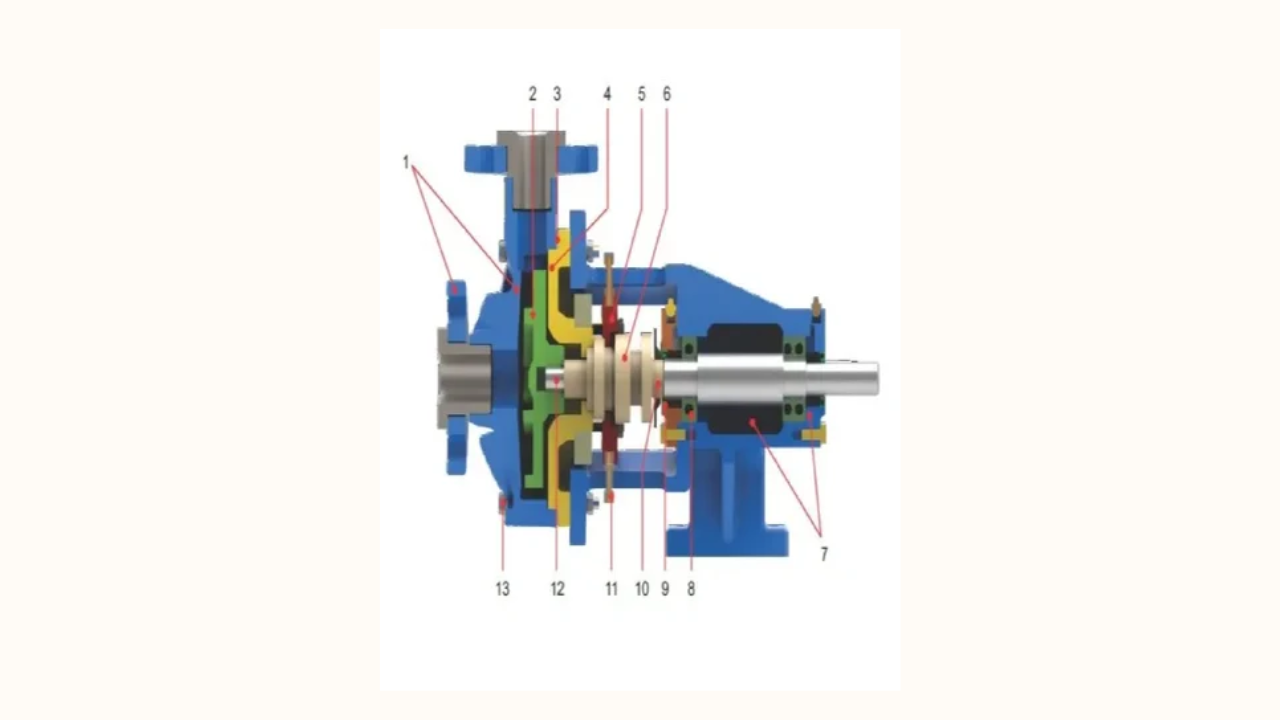
Installation Steps of Centrifugal Monoblock Pump
By following these installation steps carefully, you can ensure that your centrifugal monoblock pump operates efficiently and reliably.
1. Positioning the Pump
- Choose the Right Location: Select a dry, clean, and stable surface for the pump, ideally near the water source and power supply. It should be easily accessible for future maintenance.
- Pump Mounting: Ensure the pump is firmly mounted on a flat, vibration-free foundation. If necessary, use a base plate or wooden slab to minimize vibrations and provide stability.
- Shelter From Water & Dust: Place the pump in a sheltered location to protect it from rain and excessive external elements. Exposure to rain and dust will significantly reduce the performance and life of the pump
- Ensure Adequate Ventilation: The pump motor should have adequate airflow around it to prevent overheating. Avoid placing it in a confined space without ventilation.
2. Connecting the Suction Pipe
- Measure and Cut the Pipe: Measure the correct length for the suction pipe to avoid excessive bends. Use the correct diameter according to the pump specifications.
- Install the Suction Flange: Attach the suction pipe to the pump’s suction flange using the appropriate fittings (e.g., flanged or threaded). Ensure the joint is tight to prevent air leaks, which can impair the pump’s performance.
- Check for Leaks: Before securing the pipe fully, run water through the suction pipe to check for any potential leaks. Use Teflon tape or thread sealant for threaded joints to prevent leaks.
3. Connecting the Discharge Pipe
- Measure and Cut the Discharge Pipe: Similar to the suction pipe, measure and cut the discharge pipe to avoid unnecessary bends and pressure losses.
- Attach the Discharge Flange: Secure the discharge pipe to the pump’s discharge flange. Use appropriate pipe fittings and make sure they are tight and sealed.
- Ensure Correct Alignment: Make sure the discharge pipe is aligned with the intended discharge point (e.g., water tank, irrigation system) to avoid strain on the pump.
4. Electrical Wiring and Motor Connection -
- Verify Electrical Specifications: Check the voltage and current ratings of the pump’s motor. Ensure the power supply matches these specifications.
- Turn Off Power: Ensure the power supply is off before wiring the motor.
- Connect the Power Leads: Follow the pump's wiring diagram to connect the electrical leads to the power supply. Make sure to connect the correct terminals for phase, neutral, and ground.
- Check Motor Alignment: Ensure the motor is correctly aligned with the pump shaft.
- Grounding: Properly ground the motor to prevent electric shocks or damage to the pump.
- Test Electrical Connections: After wiring, check that all electrical connections are secure and insulated. Use a multimeter to test voltage and continuity.
5. Priming the Pump
- Fill the Pump Casing: Before starting the pump, fill the pump casing with water (prime it) to prevent dry running, which can cause damage to the pump’s seals and internal components.
- Vent the Air: Open the air vent valve (if available) to expel trapped air from the system.
- Check for Leaks: Inspect all joints and pipe connections for any leaks during the priming process.
6. Testing the Pump
- Turn on the Power: Switch on the power supply and start the pump.
- Monitor Operation: Observe the pump’s operation to ensure it is running smoothly. Look out for abnormal vibrations, noise, or overheating.
- Check Flow and Pressure: Use a pressure gauge to ensure that the pump is providing the required flow rate and pressure.
- Adjust as Necessary: If the pressure or flow rate is too low, check for possible clogs, air locks, or incorrect pipe sizing. Adjust the pump speed or valve settings if needed.
7. Final Adjustments
- Tighten Connections: After the initial run, ensure all pipe connections and bolts are securely tightened, as vibrations during operation may loosen them.
- Align the Shaft: If necessary, check that the pump shaft is aligned correctly with the motor and that no misalignment is causing friction or excessive wear.
- Set Pressure Switch: If the pump is equipped with a pressure switch, adjust it according to the desired operational pressure.
Troubleshooting Common Issues When Installing a Centrifugal Monoblock Pump
One common issue during the installation of a centrifugal monoblock pump is no water flow. This could be caused by several factors, such as the pump not being primed correctly, a blockage in the suction line, or the pump impeller being damaged.
Ensure that the pump is fully primed before starting, and check for any obstructions or air pockets in the suction line. If necessary, clean the impeller or replace it if it is worn or damaged.
Excessive noise or vibrations is another frequent problem, often caused by misalignment between the motor and the pump, loose mounting, or cavitation. Ensure that the pump is properly aligned with the motor and tightly secured to the base.
Cavitation, caused by air entering the pump or insufficient flow to the impeller, can also generate noise and vibrations. This can be solved by making sure the suction line is free from air leaks and that the pump is receiving an adequate fluid supply.
Overheating of the pump typically occurs due to poor ventilation, high friction from worn bearings, or a motor overload. Check that the pump is installed in a well-ventilated area, with sufficient airflow around the motor to dissipate heat.
Additionally, inspect the bearings for wear and ensure proper lubrication. If the motor is overloaded, consider reducing the load or checking for blockages in the system that could be causing excessive strain.
Lastly, low pressure can be an issue, often due to leaks in the discharge line, a clogged impeller, or incorrect pump sizing. Inspect the discharge line for any leaks, and clean or replace the impeller if necessary.
If the pump is too small for the system’s requirements, it may not generate sufficient pressure, and a larger pump may be needed to meet performance demands.
Safety Tips and Best Practices
When installing a centrifugal monoblock pump, safety is crucial to ensure not only proper installation but also to prevent accidents. Here are key safety tips to follow:
-
Ensure the pump has adequate ventilation:
Ensure the pump is installed in a well-ventilated area to prevent overheating. Adequate airflow around the pump motor is essential for dissipating heat, as lack of ventilation can reduce efficiency and damage the motor over time. It's equally important to never run the pump dry.
-
Never run the pump dry:
Before operation, make sure the pump is fully primed with water or the appropriate fluid, as dry running can severely damage internal components like seals, impellers, and bearings. Installing automatic sensors or control systems can help prevent this issue.
-
Regularly check for leaks and perform routine maintenance:
Regularly checking for leaks and performing routine maintenance is crucial for safe and efficient operation. Inspect the pump and its connections for any signs of leakage, which could indicate worn-out seals or installation problems.
Following the manufacturer's maintenance schedule will help keep components such as bearings, seals, and impellers in optimal condition. Monitoring vibration, noise, and temperature will also allow for early detection of mechanical issues, ensuring that the pump remains reliable and safe to use.
A Final Word of Advice
In conclusion, installing a centrifugal monoblock pump involves careful planning and attention to detail, from selecting the right location with proper ventilation to securely mounting the pump and ensuring it is primed before operation.
Regular checks for leaks, alignment, and proper electrical connections are essential for smooth performance. By following these steps and adhering to maintenance schedules, you can ensure efficient and long-lasting pump operation.
The Best Borewell Submersible Pumps for Agricultural Use in 2025
2024-12-03
Borewell submersible pumps are crucial for agricultural operations, especially in regions dependent on groundwater for irrigation. They are installed deep within borewells and help lift water to the surface efficiently.
In 2025, advancements in technology and energy efficiency have brought several new options to the market, offering better performance, durability, and cost-effectiveness. Here’s a guide to some of the best borewell submersible pumps for agricultural use in 2025.
What is a Submersible Pump?
A submersible pump is a device that draws out water and debris while completely submerged in the liquid from which it has to draw water. Such equipment has a multitude of applications across various industries.
For instance, some individuals utilize such devices as sump pumps to draw out the water from their basements or any other place with low elevation in the event of floods.
Because the water will surround the pump, the manufacturer provides the product with water protection to ensure the liquid will not harm the interior parts of the pump.
This system guarantees the product’s high efficiency in operation and provides a longer lifespan of your submersible pump investment.
List of 10 Best Submersible Pumps Available in India
Top Submersible Pumps in the Market
Kirloskar Submersible Pumps
Kirloskar Brothers Limited is a pioneer in the pump manufacturing industry, offering a versatile range of products designed for both household and industrial applications.
Renowned for their commitment to quality, innovation, and efficiency, Kirloskar pumps are a trusted choice in fluid management.
Calama Submersible Pumps (Best in Class)
Calama Pumps is a trailblazer in India’s submersible pump industry, founded in 1962 and credited with being the first to introduce submersible pump technology in India through a technical collaboration with Pleuger, Germany.
With over six decades of expertise, Calama has established itself as a leader in innovation, delivering top-tier solutions for water management.
Renowned for their exceptional efficiency and performance, Calama pumps cater to a wide range of applications, including agriculture, industrial operations, and civil engineering projects.
Calama Pumps combines cutting-edge technology with unmatched durability, making them the top choice for those seeking efficient and dependable water management solutions.
Crompton Submersible Pumps
With nearly a century of experience, Crompton is synonymous with durable and energy-efficient submersible pumps. These pumps are equipped with advanced safety features to protect motors and are celebrated for their consistent performance and eco-friendly design.
V-Guard Submersible Pumps
V-Guard’s submersible pumps are known for their robust build, quiet operation, and high energy efficiency. These pumps are ideal for a variety of uses, including borewells, wells, and irrigation systems. They are a go-to choice for residential, agricultural, and industrial needs.
Franklin Electric Submersible Pumps
An international leader in pump systems, Franklin Electric offers premium submersible pumps that incorporate cutting-edge technology. Known for their durable construction and superior hydraulic efficiency, Franklin Electric ensures optimal performance through its innovative design and high-quality components.
Texmo Submersible Pumps
Texmo has been a prominent name in the Indian submersible pump market for over 40 years, with a growing presence in global markets.
Balancing affordability, reliability, and functionality, Texmo pumps are tailored for diverse applications and have become a preferred choice for both local and international industries.
Key Considerations When Choosing a Borewell Submersible Pump
- Depth of Borewell: Different pumps are designed for various well depths. Ensure the pump you choose is compatible with the depth of your borewell.
- Power Requirements: Pumps come in various horsepower ratings. Select a pump based on the size of your farm and your irrigation needs.
- Flow Rate: The flow rate is crucial for efficient irrigation. A higher flow rate will save time but may require more power.
- Energy Efficiency: Look for energy-efficient models to save on electricity costs, which is especially important for larger farms with high water demands.
- Durability and Material: Stainless steel and thermoplastic impellers offer better durability, especially in areas with corrosive water or high sand content.
- Voltage Range: Agricultural areas often face voltage fluctuations. Pumps that can handle variable voltage without damage are a smart investment.
Conclusion
In 2025, advancements in borewell submersible pump technology have made it easier for farmers to access affordable and efficient irrigation solutions. Whether you own a small farm or manage a large agricultural operation, the right submersible pump can make a significant difference in productivity.
From energy efficiency to robust designs, brands like Kirloskar, CRI, and Shakti offer some of the best options available. Choose a pump that suits your borewell depth, water demand, and budget to ensure optimal irrigation and long-term success for your agricultural business.
Search
Recent Post
-
How industrial pump suppliers ensure efficiency and longevity of equipment

Industrial pumps play a critical role in manufacturing, processing, and large-scale production. The efficiency and lifespan of these essential machines depend heavily on the quality of the pump and the support provided by the supplier.
A reliable supplier ensures that the right pump is selected, installed, and maintained properly for optimal performance and durability.
In this guide, we’ll explore how industrial pump suppliers like Calama Pumps contribute to equipment efficiency and longevity.
Understanding the Importance of Industrial Pump Efficiency and Longevity
Efficient industrial pumps reduce operational costs, minimize downtime, and enhance productivity. Longevity ensures fewer replacements and repairs, leading to long-term savings and consistent performance. High-quality suppliers prioritize both efficiency and durability to maximize the value of their products.
How Industrial Pump Suppliers Ensure Efficiency
1. Providing High-Quality Pumps
A top-tier supplier offers pumps made from durable, corrosion-resistant materials designed to handle various industrial fluids and pressures. Calama Pumps, for instance, provides robust equipment built for demanding environments.
2. Expert Consultation and Product Selection
Proper pump selection is crucial for efficiency. Suppliers assess your system’s requirements, including flow rate, pressure, and fluid type, to recommend the ideal pump model.
3. Customization Options
Some industrial applications require tailored solutions. Reliable suppliers offer customization, ensuring pumps are designed to meet specific operational needs.
4. Advanced Technology and Innovation
Modern industrial pumps feature advanced designs that improve efficiency, such as variable frequency drives (VFDs) and high-efficiency impellers. Suppliers stay updated with technological advancements to offer cutting-edge products.
5. Energy Efficiency Focus
Energy-efficient pumps lower operational costs and reduce environmental impact. Suppliers guide businesses toward models with high-efficiency ratings and optimized performance.
How Industrial Pump Suppliers Ensure Longevity
1. Quality Assurance and Testing
Reputable suppliers conduct rigorous testing to ensure their pumps meet industry standards for performance and durability.
2. Comprehensive Installation Support
Proper installation is key to longevity. Suppliers provide detailed guidance and professional installation services to prevent common issues.
3. Maintenance and Service Plans
Regular maintenance extends pump life. Suppliers like Calama Pumps offer service packages, including inspections, part replacements, and performance assessments.
4. Access to Genuine Spare Parts
Using authentic parts ensures compatibility and maintains performance. Established suppliers stock a wide range of genuine components.
5. Training and Technical Support
Knowledgeable operators enhance efficiency and lifespan. Suppliers provide training programs and ongoing technical support to keep systems running smoothly.
Why Choose Calama Pumps for Industrial Solutions
Calama Pumps stands out as a trusted name in the industry, offering high-quality pumps, expert consultation, and comprehensive after-sales support. Their commitment to efficiency and longevity makes them a preferred choice for industrial operations worldwide.
Frequently Asked Questions (FAQs)
Why is supplier selection important for pump efficiency?
The right supplier ensures you get high-quality, energy-efficient pumps tailored to your needs, reducing operational costs and enhancing performance.
How do industrial pump suppliers improve equipment longevity?
Suppliers offer quality products, proper installation, regular maintenance, and access to genuine parts, all of which extend pump life.
What role does customization play in pump efficiency?
Customized pumps match specific operational requirements, optimizing performance and minimizing wear and tear.
Why trust Calama Pumps for industrial solutions?
Calama Pumps provide durable, efficient equipment with excellent support services, ensuring long-term reliability and productivity.
How often should industrial pumps be serviced?
Regular maintenance, including inspections and part replacements, should be conducted at least annually to maintain efficiency and prevent breakdowns.
By partnering with reliable industrial pump suppliers like Calama Pumps, businesses ensure their equipment operates at peak efficiency and enjoys a long service life. Quality products, expert support, and comprehensive maintenance plans all contribute to optimal performance and cost savings over time.
-
High pressure pumps: how they work and where they are used

High-pressure pumps play a crucial role in various industrial and commercial operations. From manufacturing plants to water treatment facilities, these pumps ensure fluid movement under high pressure, enabling efficient processes and system performance.
In this detailed guide, we’ll dive into the working mechanisms of high-pressure pumps, their key applications, and why trusted suppliers like Calama Pumps offer some of the best solutions available.
Understanding High-Pressure Pumps
A high-pressure pump is designed to move liquids at significantly increased pressures compared to standard pumps. These pumps convert mechanical energy into hydraulic energy, generating pressure that propels fluid through pipelines and systems at high velocities.
Key Components of High-Pressure Pumps
- Pump Head: The part where the fluid enters and exits.
- Piston or Plunger: Moves back and forth to create pressure.
- Seals and Valves: Ensure fluid direction and prevent leaks.
- Motor: Provides the mechanical energy required to drive the pump.
Working Mechanism
High-pressure pumps operate by displacing a specific volume of fluid through the pump’s head using a piston, plunger, or rotating component. As the motor powers the movement, it creates pressure that pushes the liquid through the discharge line.
Types of High-Pressure Pumps
1. Reciprocating Pumps
Reciprocating pumps use pistons or plungers to displace fluid in a back-and-forth motion. These pumps are known for their precision and ability to handle high-viscosity fluids.
Applications:
- Oil and gas industry
- Chemical processing
- High-pressure cleaning systems
2. Centrifugal High-Pressure Pumps
Centrifugal pumps use rotating impellers to generate pressure through centrifugal force. They are ideal for moving large volumes of fluid quickly and efficiently.
Applications:
- Water supply systems
- HVAC systems
- Irrigation
3. Diaphragm Pumps
Diaphragm pumps use flexible membranes to create pressure without direct contact between the liquid and moving parts. This makes them suitable for handling corrosive and abrasive fluids.
Applications:
- Chemical transfer
- Food and beverage industry
- Pharmaceutical manufacturing
Key Applications of High-Pressure Pumps
1. Water Treatment Plants
High-pressure pumps help move water through filtration and purification systems, ensuring clean and safe water supply.
2. Manufacturing and Production
Industries rely on these pumps for cooling, lubrication, and fluid transfer processes that require consistent pressure.
3. Oil and Gas Sector
From drilling operations to pipeline transportation, high-pressure pumps manage fluid movement under extreme conditions.
4. Power Generation
In power plants, these pumps maintain cooling systems and steam production, essential for efficient energy generation.
5. Cleaning and Maintenance
High-pressure washers use these pumps for industrial cleaning, ensuring thorough removal of dirt and contaminants.
Factors to Consider When Choosing a High-Pressure Pump
1. Pressure and Flow Rate Requirements
Assess your system’s pressure needs and fluid volume to select a pump with the right capacity.
2. Fluid Type
Consider the chemical composition, temperature, and viscosity of the fluid being pumped.
3. Material and Durability
Choose pumps made from corrosion-resistant materials for longevity and reliability.
4. Energy Efficiency
Opt for high-efficiency models to reduce operational costs and environmental impact.
5. Supplier Reputation
Trusted suppliers like Calama Pumps provide high-quality equipment and expert support.
Why Calama Pumps Are a Trusted Choice
Calama Pumps have established themselves as industry leaders in providing high-performance high-pressure pumps. Known for their reliability and efficiency, Calama Pumps cater to diverse industrial needs with customized solutions and exceptional after-sales support.
Frequently Asked Questions (FAQs)
What industries use high-pressure pumps the most?
Industries like water treatment, oil and gas, manufacturing, and power generation rely heavily on high-pressure pumps.
How do high-pressure pumps differ from standard pumps?
High-pressure pumps generate significantly higher pressure, making them suitable for demanding applications.
Are high-pressure pumps energy-efficient?
Yes, modern high-pressure pumps are designed for efficiency, reducing energy consumption and operational costs.
How do I maintain a high-pressure pump?
Regular maintenance, including seal checks, lubrication, and part replacements, ensures optimal performance.
Why choose Calama Pumps for high-pressure solutions?
Calama Pumps offer durable, efficient, and customizable high-pressure pump systems with excellent support services.
High-pressure pumps are indispensable in industrial applications requiring reliable fluid movement and consistent pressure. By partnering with reputable suppliers like Calama Pumps, businesses ensure they receive top-quality equipment tailored to their operational needs.
-
Why centrifugal pumps are the most popular choice for industrial applications

Centrifugal pumps are widely regarded as the most popular and efficient solution for industrial applications worldwide. Their simplicity, versatility, and cost-effectiveness make them the go-to choice for industries ranging from manufacturing to chemical processing.
In this comprehensive guide, we’ll explore why centrifugal pumps are so favored and why trusted suppliers like Calama Pumps often recommend them for various industrial needs.
Understanding Centrifugal Pumps
A centrifugal pump uses rotational energy, typically from an electric motor, to move fluid through a system. The pump’s impeller spins the liquid, creating centrifugal force that pushes the fluid outward and into the discharge pipe. This simple yet effective mechanism ensures consistent fluid movement with minimal effort.
Key Components of Centrifugal Pumps:
- Impeller: The rotating component that generates centrifugal force.
- Casing: Houses the impeller and directs the flow of fluid.
- Suction Pipe: Draws fluid into the pump.
- Discharge Pipe: Expels fluid from the pump into the system.
Advantages of Centrifugal Pumps in Industrial Applications
1. High Efficiency and Performance
Centrifugal pumps are known for their ability to handle large volumes of fluid at high speeds, making them ideal for industrial operations requiring quick and efficient fluid transfer.
Benefits:
- Consistent flow rates.
- High-speed operation.
- Minimal energy consumption.
2. Cost-Effectiveness
One of the primary reasons industries choose centrifugal pumps is their affordability. They have a relatively simple design, which translates to lower manufacturing and maintenance costs.
Cost Benefits:
- Lower initial purchase price.
- Reduced maintenance and repair expenses.
- Energy-efficient operation lowers utility costs.
3. Versatility Across Industries
Centrifugal pumps can handle various fluids, including water, chemicals, and slurries. Their adaptability makes them suitable for numerous industrial applications, from food processing to petrochemicals.
Common Applications:
- Water supply and treatment.
- Chemical manufacturing.
- Oil and gas refineries.
4. Ease of Installation and Maintenance
The straightforward design of centrifugal pumps simplifies both installation and maintenance. With fewer moving parts, the risk of mechanical failure is minimized.
Maintenance Advantages:
- Simple disassembly for cleaning and repairs.
- Availability of spare parts from suppliers like Calama Pumps.
- Lower downtime due to quick servicing.
Factors to Consider When Choosing a Centrifugal Pump
Selecting the right centrifugal pump for your industrial application requires careful evaluation of several factors. Understanding these considerations ensures you get the best performance and longevity from your equipment.
1. Flow Rate Requirements
The flow rate, measured in gallons per minute (GPM) or cubic meters per hour (m³/h), determines how much fluid the pump can move. Matching the pump’s capacity to your operational needs prevents underperformance or overexertion.
How to Assess:
- Calculate your system’s peak demand.
- Consider variations in fluid volume over time.
- Choose a pump with a flow rate slightly above your maximum requirement.
2. Pressure and Head
The pressure the pump needs to generate to move fluid through the system is crucial. Head refers to the height the pump can push the fluid, and it impacts the pump’s efficiency.
Factors to Evaluate:
- Total dynamic head (TDH) of your system.
- Friction losses in piping and fittings.
- Vertical lift and discharge distance.
3. Type of Fluid
The nature of the fluid being pumped affects the pump’s material and design. Viscous, corrosive, or abrasive fluids require specialized impellers and casings.
Fluid Considerations:
- Temperature and chemical composition.
- Viscosity and particle content.
- Compatibility with pump materials.
4. Pump Efficiency
Energy-efficient pumps lower operational costs and reduce environmental impact. Evaluating the pump’s efficiency curve helps determine its performance across various flow rates and pressures.
Efficiency Tips:
- Select pumps with high-efficiency ratings.
- Monitor performance metrics like power consumption.
- Partner with suppliers like Calama Pumps for energy-efficient options.
5. Durability and Construction
Industrial environments demand robust equipment. The pump’s construction material must withstand harsh conditions, including high temperatures and corrosive chemicals.
Material Choices:
- Stainless steel for chemical resistance.
- Cast iron for durability in heavy-duty applications.
- Specialized alloys for high-temperature operations.
6. Supplier Reputation and Support
Choosing a reputable supplier ensures you receive high-quality equipment and reliable after-sales service. Trusted names like Calama Pumps offer expert advice, genuine spare parts, and comprehensive support.
Why Supplier Matters:
- Access to certified and tested equipment.
- Technical support for installation and maintenance.
- Warranty and service agreements.
Why Calama Pumps Recommend Centrifugal Pumps
Calama Pumps has established itself as a leading provider of industrial pumping solutions, and centrifugal pumps remain one of their top recommendations. Their efficiency, cost-effectiveness, and versatility align perfectly with Calama Pumps’ commitment to quality and performance.
Reasons for Recommendation:
- Proven reliability in diverse industrial applications.
- Availability of customizable solutions.
- Strong after-sales support and maintenance services.
Frequently Asked Questions (FAQs)
Why are centrifugal pumps so popular in industrial use?
Their efficiency, affordability, and ability to handle various fluids make them a preferred choice for industrial applications.
What types of fluids can centrifugal pumps handle?
Centrifugal pumps can move water, chemicals, oils, and slurries, making them versatile across industries.
How do I choose the right centrifugal pump for my needs?
Assess flow rate, pressure requirements, fluid type, and system head to select a pump that meets your specifications.
Are centrifugal pumps energy-efficient?
Yes, their high efficiency reduces power consumption, lowering operational costs.
Why trust Calama Pumps for centrifugal pump solutions?
Calama Pumps offers high-quality, efficient centrifugal pumps with expert support and reliable service.
Centrifugal pumps continue to dominate industrial applications due to their efficiency, affordability, and adaptability. By partnering with reputable suppliers like Calama Pumps, businesses ensure they receive high-performance equipment tailored to their specific needs.
Caterories
- No category available.
Subscribe
Subscribe to Our newsletter for free Update every week
